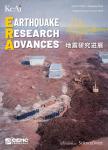Assessment of strong earthquake risk in the Chinese mainland from 2021 to 2030
作者机构:Institute of Earthquake ForecastingChina Earthquake AdministrationKey Laboratory of Earthquake ForecastingBeijing100036China The First Monitoring and Application CenterChina Earthquake AdministrationTianjin300180China The Second Monitoring and Application CenterChina Earthquake AdministrationXi'an710054China China University of Geosciences(Wuhan)Wuhan430074China Shaanxi Earthquake AgencyXi'an710068China National Institute of Natural HazardsBeijing100085China Sichuan Earthquake AdministrationChengdu610044China Gansu Earthquake AgencyLanzhou730000China Institute of GeologyChina Earthquake AdministrationBeijing100029China Yunnan UniversityKunming650091China
出 版 物:《Earthquake Research Advances》 (地震研究进展(英文))
年 卷 期:2023年第3卷第1期
页 面:81-91页
核心收录:
学科分类:070801[理学-固体地球物理学] 07[理学] 0708[理学-地球物理学]
基 金:the National Key R&D Program of China(grants 2017YFC1500501)
主 题:Long-term earthquake prediction Chinese mainland Active tectonic block
摘 要:The long-term earthquake prediction from 2021 to 2030 is carried out by researching the active tectonic block boundary zones in the Chinese *** on the strong earthquake recurrence model,the cumulative probability of each target fault in the next 10 years is given by the recurrence period and elapsed time of each fault,which are adopted from relevant studies such as seismological geology,geodesy,and historical earthquake *** on the long-term predictions of large earthquakes throughout the world,this paper proposes a comprehensive judgment scheme based on the fault segments with the seismic gap,motion strongly locked,sparse small-moderate earthquakes,and apparent Coulomb stress *** paper presents a comprehensive analysis of the relative risk for strong earthquakes that may occur in the coming 10 years on the major faults in the active tectonic block boundary zones in the Chinese *** present loading rate of each fault is first constrained by geodetic observations;the cumulative displacement of each fault is then estimated by the elapsed time since the most recent strong earthquake.



